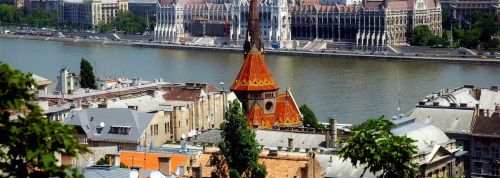Travel highlights Budapest

House of Parliament
As the millennial celebrations of 1896 approached, the House of Parliament was built. The Palace of Westminster in part inspired the design, but a well-known Hungarian architect, Imre Steindl, laid out the plans in their entirety. The building stretches 268 meters in its length, along the Danube embankment. Ornamented with white neo-gothic turrets and arches, it forms the most outstanding landmark of the Pest side horizon.
Royal castle
The Castle Palace, was almost ruined in 1686, and rebuilt in the 18th century, when it became the residence of the Palatine. The extensive buildings were badly damaged in the Second World War. After decades of restoration work, in the course of which it was possible to preserve many medieval and Renaissance structures, individual sections are gradually being opened up to the public.
Gellert Hill
The panoramic Gellért Hill, forms a striking part of the landscape of Budapest. Names after a Benedictine monk, the hill is like a block of dolomite, the east flank of which falls steeply down to the Danube, while the west side consists of terraces. Several medicinal springs emerge which supply the Gellért Baths, Rudas Baths and Rác Baths.
Parts of the Citadel, built by the Austrians on the summit of Gellârt Hill after 1851, are open to the public.
Margaret Island
Margaret Island is undoubtedly the main local recreation center for the people of Budapest. Already used by the Romans, is was where the monks built monasteries and churches. In the 18th it was completely landscaped.
Thermal springs, space for sports and games, beautiful gardens, and the remains of buildings which play a significant part in the history of the town, all serve to attract many visitors every day.
Fishermen's Bastion
On Castle Hill, at the spot where in the Middle Ages the fishermen had their defense installations, the Fishermen's Bastion (Halászbástya) was built behind the Matthias Church between 1895 and 1902. Its towers, colonnades and embrasures, which were designed in Neo-Romanesque style by Frigyes Schulek, were renovated a few years ago. From the bastion there is a magnificent view over the city and the Danube.